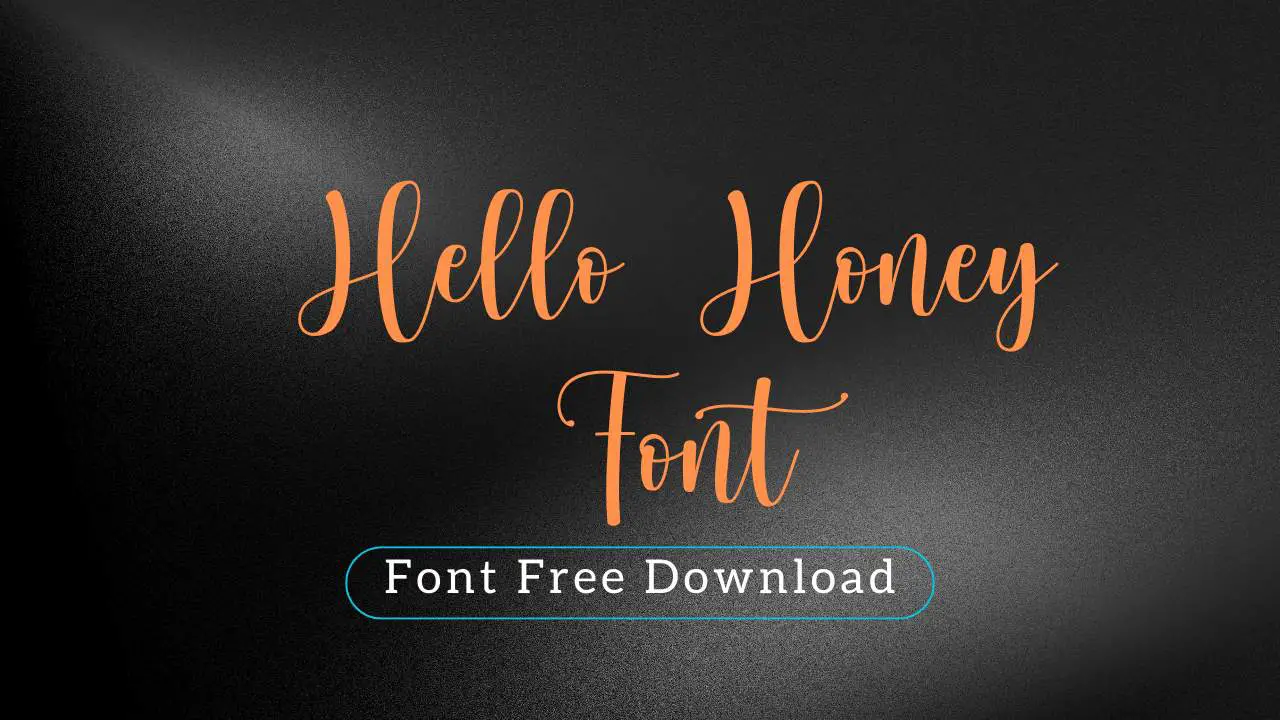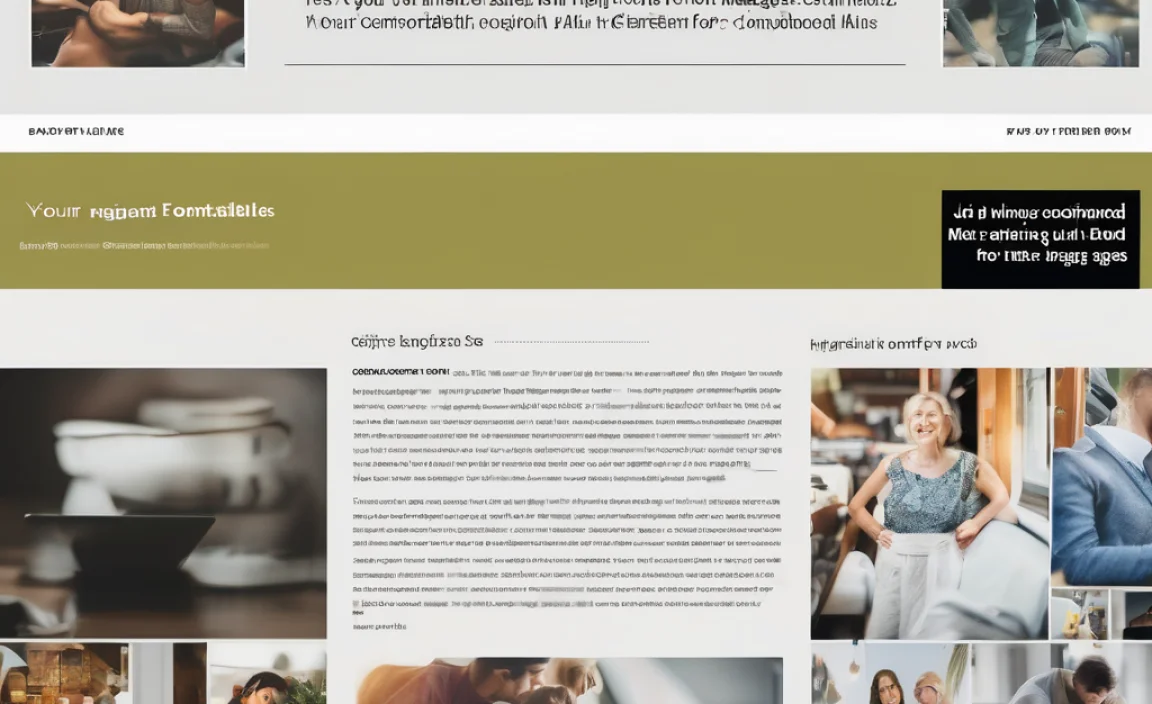A simple signature font adds effortless style to any design, offering a personal, elegant touch. Choosing the right one enhances brand personality and readability, making your message memorable and chic.
Ever find yourself staring at a blank canvas, wondering how to add that perfect touch of personality and elegance to your design? That little something that makes your project feel uniquely yours? It’s a common creative puzzle! We all want our designs to look polished and professional, but sometimes they feel a bit… sterile.
The good news is, there’s a simple solution hiding in plain sight: the humble, yet powerful, signature font. Think of it as your design’s beautiful handwriting. It can transform a standard layout into something truly special, infusing it with character and a touch of effortless charm. Ready to unlock this secret weapon for your next project? Let’s dive in!
What Exactly Is a Simple Signature Font?
In the world of typography, a signature font is a type of script font designed to mimic human handwriting, particularly a personal signature. The “simple” part is key here. Unlike more elaborate calligraphic fonts with swashes, flourishes, and complex ligatures, simple signature fonts are streamlined and clean. They aim for legibility and an understated elegance.
Imagine the quick, confident flourish of signing a document – that’s the vibe. They often feature:
- Clear shapes: Letters are generally easy to distinguish.
- Moderate flow: There might be some connection between letters, but it’s not overly ornate.
- Readability: The primary goal is to be understood easily, even at smaller sizes.
- Personal touch: They evoke a sense of authenticity and a human element.
These fonts are perfect for situations where you want that personal feel without sacrificing clarity. They feel custom-made, authentic, and sophisticated, all at once.
Why Use a Simple Signature Font? The Undeniable Appeal
Why do designers and brands gravitate towards simple signature fonts? It’s all about the feeling they evoke and the subtle power they wield. They offer a unique blend of:
- Personalization: They instantly make a design feel more human and less corporate.
- Elegance & Sophistication: A well-chosen script font can elevate a design, adding a touch of class.
- Brand Personality: They can communicate warmth, creativity, luxury, or artisanal qualities.
- Memorability: Unique typography helps your brand stand out and be remembered.
- Versatility: Despite being a script, “simple” versions are surprisingly adaptable.
Think about wedding invitations, elegant product packaging, or a personal blog – these are all prime candidates where a simple signature font can shine. They bridge the gap between formal and friendly, making them incredibly useful.
Choosing Your Perfect Simple Signature Font: A Step-by-Step Guide
Selecting the right font can feel overwhelming, but with a few key considerations, you can find a simple signature font that perfectly suits your needs. Let’s break it down:
Step 1: Define Your Project’s Purpose and Audience
Before you even look at fonts, ask yourself:
- What is this project for? Is it a wedding invite, a business card, a website header, a social media post?
- Who are you trying to reach? What kind of impression do you want to make on them? (e.g., luxurious, approachable, creative, professional)
- What is the overall mood? Romantic, modern, minimalist, playful, classic?
Your answers will guide you towards the appropriate style of simple signature font. For example, a minimalist brand might opt for a cleaner, more geometric script, while a luxury brand might lean towards something with a slightly more pronounced, flowing stroke.
Step 2: Consider Readability First
This is crucial. A signature font, by nature, can sometimes be tricky to read, especially overly ornate ones. Simple signature fonts prioritize legibility. Look for:
- Clear letterforms: Can you easily distinguish ‘a’ from ‘o’, or ‘i’ from ‘l’?
- Moderate letter spacing: Letters shouldn’t be too cramped or too far apart.
- Appropriate weight: Is it too thin to see easily, or too bold to feel delicate?
Tip: Try typing out a few key words (like your brand name or a tagline) in potential fonts and view them at various sizes to test their readability.
Step 3: Evaluate the Font’s Style and Personality
Even within “simple,” there’s variety:
- Modern Scripts: Often cleaner, with straighter lines and less embellishment. Think minimalist chic.
- Classic Scripts: Tend to have a bit more traditional flow, reminiscent of mid-century handwriting.
- Handwritten Scripts: Feel more casual and personal, like everyday jotting.
Consider if the font’s underlying style aligns with your brand’s aesthetic. A font that looks like a quick note might not suit a high-end jewelry brand, for instance.
Step 4: Check for Character Set and Ligatures
A good font will include a comprehensive character set, meaning it has all the letters, numbers, and punctuation you need. For signature fonts, also look out for:
- Ligatures: These are connected letters that create a more fluid look (e.g., ‘th’, ‘ff’). Simple scripts will have them, but avoid fonts with too many complex or distracting ligatures.
- Alternate Characters: Some fonts offer slightly different versions of letters for a more varied handwritten feel.
Most font foundries provide previews of these features. A tool like Google Fonts is a great place to explore and test many of these aspects for free.
Step 5: Test Font Pairings
A signature font often plays best when paired with a more stable, readable font. Consider pairing your chosen script with:
- A clean sans-serif: For a modern and approachable feel.
- A classic serif: For a timeless and elegant look.
- A simple slab serif: For a bit of quirky character.
Aim for contrast. If your script is flowing and delicate, choose a sans-serif that is bold and geometric, or vice-versa. This creates visual harmony and ensures all essential information remains legible.
Where to Find Simple Signature Fonts
Discovering the perfect font is an exciting part of the design process! Fortunately, there are many excellent resources available, offering both free and premium options.
Free Resources
For beginners and those on a budget, free font sites offer a treasure trove of options. Always check the license to ensure you can use the font for your intended purpose (commercial or personal).
- Google Fonts: A vast, curated collection of open-source fonts. You can filter by category (like “Handwriting” or “Script”) and preview them easily. It also provides usage examples.
- Font Squirrel: Offers a hand-picked selection of high-quality free fonts that are generally licensed for commercial use. Their “Font Identifier” tool can also help you find similar fonts to ones you admire.
- DaFont & 1001 Fonts: These sites have huge libraries, but sift carefully. Many are free for personal use only, and quality can vary. Look for fonts with higher download counts and good reviews.
Premium Font Marketplaces
If you’re looking for unique, high-quality, or specialized fonts, paid marketplaces are the way to go. These often offer more extensive character sets, extensive language support, and professional support.
- MyFonts: One of the largest marketplaces, featuring fonts from independent foundries and major developers.
- Creative Market: A popular platform for designers, offering a wide range of fonts, graphics, and templates. You can often find bundles that offer great value.
- Fontspring: Known for its straightforward licensing and excellent selection of web fonts.
- Adobe Fonts: If you subscribe to Adobe Creative Cloud, you get access to a massive library of high-quality fonts that can be used across Adobe applications and for web projects.
Popular Simple Signature Fonts to Inspire You
To get you started, here are a few examples of simple signature fonts that are well-loved for their balance of style and readability. These are great starting points for your search:
| Font Name | Style Profile | Best For | Where to Find (Examples) |
|---|---|---|---|
| Playlist Script | Casual, handwritten, flowing | Blogs, invitations, branding | MyFonts, Fontspring |
| Satisfy | Classic, graceful, single-stroke feel | Logos, headlines, personal stationery | Google Fonts |
| Great Vibes | Elegant, flowing, slightly formal | Weddings, luxury branding, quotes | Google Fonts |
| Dancing Script | Playful, bouncy, friendly | Children’s brands, greetings cards, casual websites | Google Fonts |
| Alex Brush | Clean, refined, minimalist script | Modern branding, elegant titles | Font Squirrel, Google Fonts |
| Pacifico | Retro, bold script, friendly vibe | Casual branding, social media, t-shirts | Google Fonts |
Remember to always experiment! What works for one project might not work for another. Try these as inspiration and see where your creativity leads you.
Tips for Using Signature Fonts Effectively
Simply choosing a signature font isn’t the whole story. Using it wisely is key to achieving that effortless style.
Keep it Concise
Signature fonts are best used for short bursts of text – think headlines, names, or short taglines. Long paragraphs in script font can quickly become unreadable and overwhelming. Use them strategically where you want to draw attention and add a touch of flair.
Pair Wisely
As mentioned earlier, pairing is everything. A simple signature font needs a solid, readable counterpart. A common and effective combination is a signature script for headings or highlights and a clean sans-serif or serif for body text. This ensures crucial information is easily digestible.
Consider this common pairing structure:
- Heading 1: Simple Signature Font
- Subheading: Simple but readable sans-serif
- Body Text: Highly legible sans-serif or serif
This hierarchy guides the reader’s eye and ensures both style and functionality.
Mind the Size
Test your signature font at different sizes. Some scripts look beautiful large but become messy when shrunk down. Ensure it remains clear and attractive across all necessary applications – from a tiny favicon to a large banner.
Consider the Context
A font that feels perfect for a wedding invitation might seem out of place on a technical manual. Always ensure the font’s personality aligns with the overall message and context of your design.
Leverage Glyphs and Alternates (If Available)
Many premium signature fonts come with extra glyphs or alternate characters that can add unique touches. If your font offers them, consider using them selectively for key letters or words to add even more personality and a hand-drawn feel.
Don’t Overuse
The charm of a signature font lies in its impact. Using too much of it diminishes its special quality. Stick to using it for one, perhaps two, elements within your design for maximum effect.
Common Mistakes to Avoid with Simple Signature Fonts
Even with the best intentions, it’s easy to fall into a few common traps when working with signature fonts. Being aware of these can help you avoid them:
- Choosing illegible fonts: The most frequent error. If it looks like scribbles, it’s probably too much. Prioritize clarity.
- Using for body text: Script fonts, even simple ones, are rarely suitable for lengthy reading. They tire the eyes quickly.
- Poor pairing: Matching a script with another decorative font creates chaos. Always pair with a neutral, readable font.
- Overuse: Making everything a signature font. This dilutes the impact and looks unprofessional.
- Ignoring licensing: Using a personal-use-only font for a commercial project can lead to legal issues. Always check the license.
- Not testing on different devices/screens: A font might look great on your monitor but be hard to read on a mobile screen. Always check across platforms.
Avoiding these pitfalls will help ensure your use of signature fonts enhances, rather than hinders, your design.
Signature Fonts vs. Other Script Fonts
It’s helpful to understand where simple signature fonts fit within the broader category of script fonts:
| Font Type | Characteristics | Best Use Cases | Example Analogy |
|---|---|---|---|
| Simple Signature Font | Mimics personal handwriting, clean lines, moderate flow, highly readable. Focuses on authentic, elegant simplicity. | Logos, headlines, invitations, personal branding. | A confident, casual signature on a thank-you note. |
| Formal Calligraphy Font | Elaborate strokes, flourishes, swashes, often requires specific software for best use. High aesthetic impact. | Luxury invitations, formal announcements, decorative elements. | The ornate, elaborate signature of royalty. |
| Casual Handwriting Font | Looser, more irregular than signature fonts. Can be playful or messy. | Personal blogs, informal notes, creative projects. | Jotting down a quick thought on a sticky note. |
| Blackletter/Gothic Font | Historic, highly stylized, thick and angular strokes. Very distinctive. | Historical documents, certain types of editorial design, themed branding. | A medieval manuscript inscription. |
The key differentiator for a “simple signature font” is its emphasis on clarity and approachability while still retaining a personal, handwritten charm. They offer the elegance of scripts without the potential legibility issues of more complex styles.
When to Use a Simple Signature Font in Your Designs
So, where do these charming fonts truly shine? Here are some ideal scenarios:
- Branding: For small businesses, solopreneurs, or brands that want to convey a personal, artistic, or bespoke feel. It’s excellent for logos and brand marks.
- Invitations & Stationery: Weddings, parties, anniversaries – anywhere you want a touch of personal elegance.
- Personal Projects: Blogs, personal websites, crafting projects, or digital scrapbooking.
- Product Packaging: Especially for artisanal goods, cosmetics, or items aiming for a premium, handcrafted feel.
- Quotes & Callouts: Highlighting inspirational quotes or important snippets of text on websites, social media graphics, or print materials.
- Website Headers: To add a unique and memorable touch to a website’s first impression.
Think of it as adding a beautiful, personal autograph to your work.
Conclusion
Incorporating simple signature fonts into your design toolkit is like discovering a secret shortcut to effortless style. They offer that perfect blend of personal touch and sophisticated elegance that can elevate any project, from branding and invitations to digital graphics and more.
By understanding their appeal, choosing wisely with readability in mind, and using them strategically alongside complementary fonts, you can unlock a new level of visual interest and personality in your work. Don’t be afraid to experiment!
Explore the wealth of free and premium options available, test them in your designs, and find the ones that truly speak to your creative vision. With a little practice, you’ll be effortlessly adding that signature charm to your designs, making them stand out and resonate with your audience long after they’ve seen them. Happy designing!
Frequently Asked Questions
Q1: What is the main benefit of using a simple signature font?
A: The main benefit is adding a personal, elegant, and authentic touch to your designs, making them feel more unique and less corporate, while remaining highly readable.
Q2: Are simple signature fonts good for body text?
A: Generally, no. Simple signature fonts are best used for short headings, titles, or highlights. Long blocks of text in script fonts can be difficult to read and tire the eyes.








